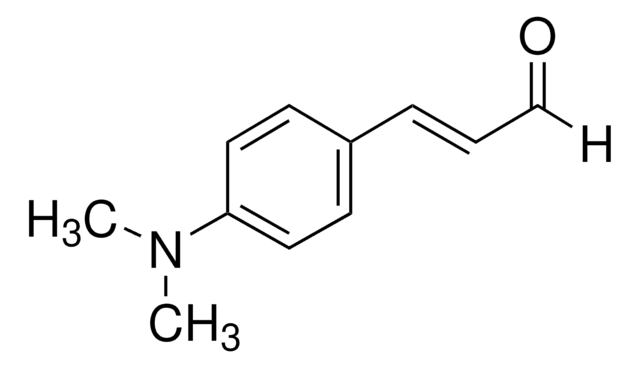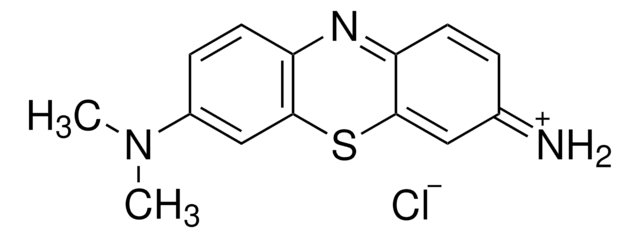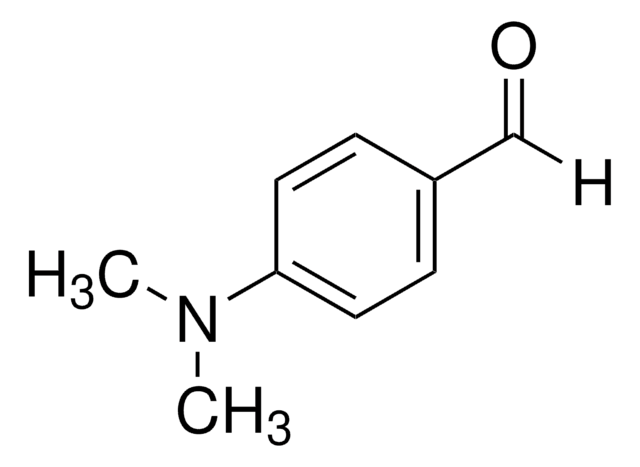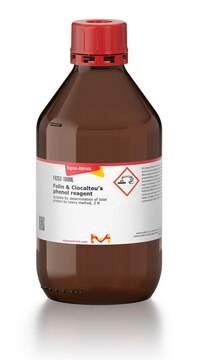49825
DMACA Reagent
suitable for microbiology
Sinonimo/i:
4-(Dimethylamino)-cinnamaldehyde solution
About This Item
Prodotti consigliati
tecniche
microbe id | specific enzyme detection: suitable
Livello qualitativo
applicazioni
agriculture
environmental
food and beverages
microbiology
Compatibilità
Escherichia coli
Streptococcus spp.
Stringa SMILE
[H]C(=O)\C=C\c1ccc(cc1)N(C)C
InChI
1S/C11H13NO/c1-12(2)11-7-5-10(6-8-11)4-3-9-13/h3-9H,1-2H3/b4-3+
RUKJCCIJLIMGEP-ONEGZZNKSA-N
Descrizione generale
Applicazioni
Componenti
Dimethylaminocinnamaldehye 1 g
Hydrochloric acid (concentrated) 1.0 ml
distilled water 99.0 ml
Altre note
Avvertenze
Warning
Indicazioni di pericolo
Consigli di prudenza
Classi di pericolo
Met. Corr. 1
Codice della classe di stoccaggio
8B - Non-combustible corrosive hazardous materials
Classe di pericolosità dell'acqua (WGK)
WGK 2
Punto d’infiammabilità (°F)
Not applicable
Punto d’infiammabilità (°C)
Not applicable
Dispositivi di protezione individuale
Faceshields, Gloves, Goggles
Choose from one of the most recent versions:
Possiedi già questo prodotto?
I documenti relativi ai prodotti acquistati recentemente sono disponibili nell’Archivio dei documenti.
Articoli
Sigma-Aldrich.com presents an article concerning Differentiation of Escherichia coli from coliforms.
Il team dei nostri ricercatori vanta grande esperienza in tutte le aree della ricerca quali Life Science, scienza dei materiali, sintesi chimica, cromatografia, discipline analitiche, ecc..
Contatta l'Assistenza Tecnica.





